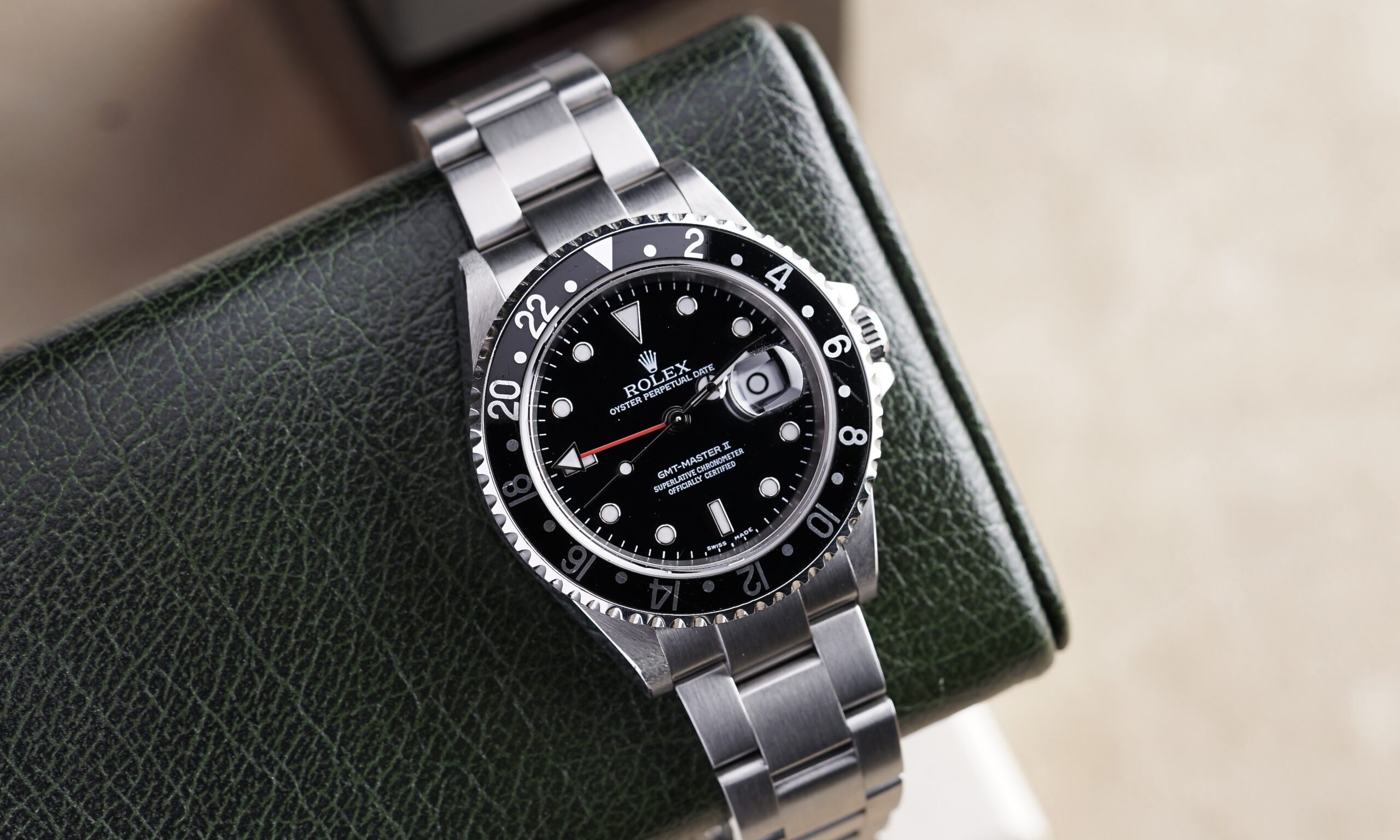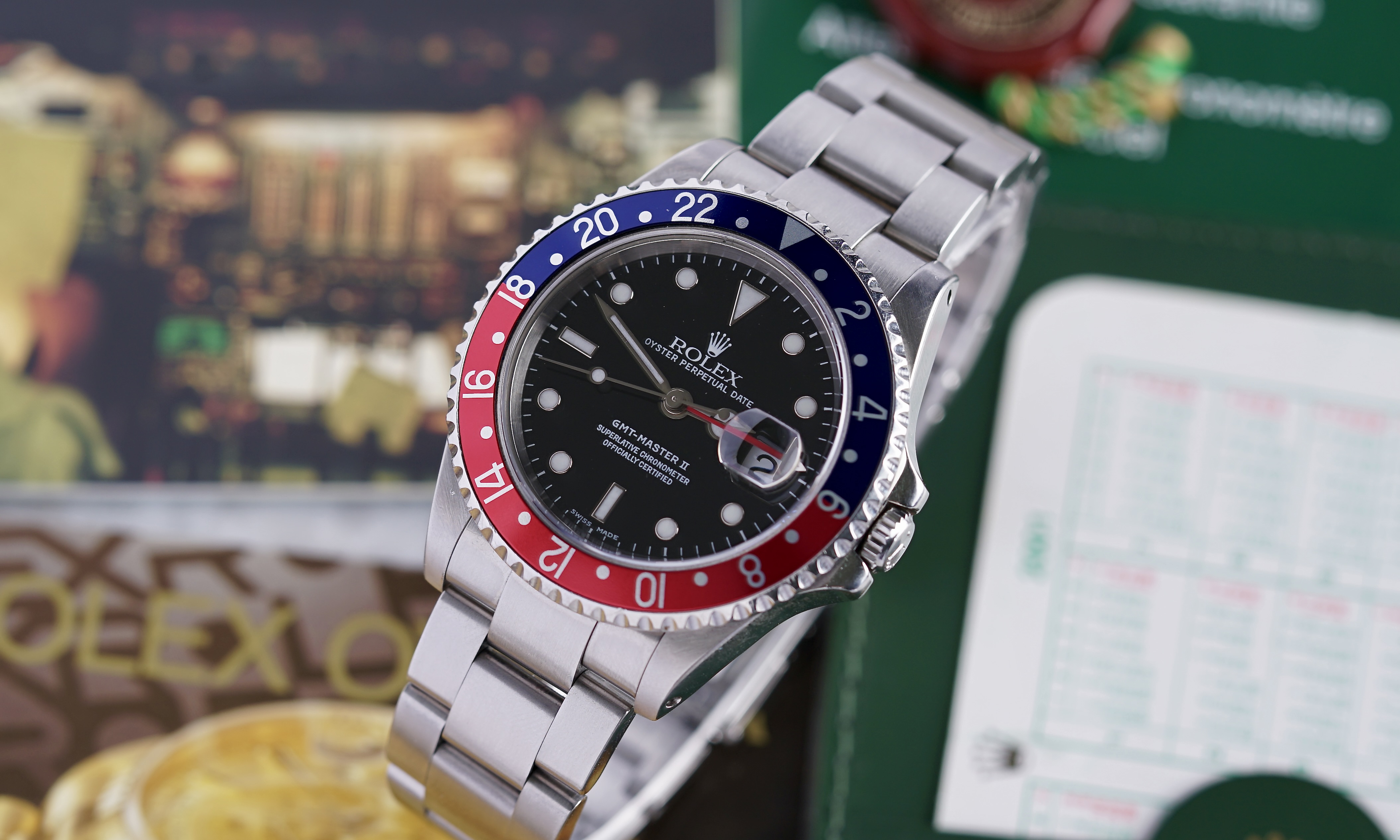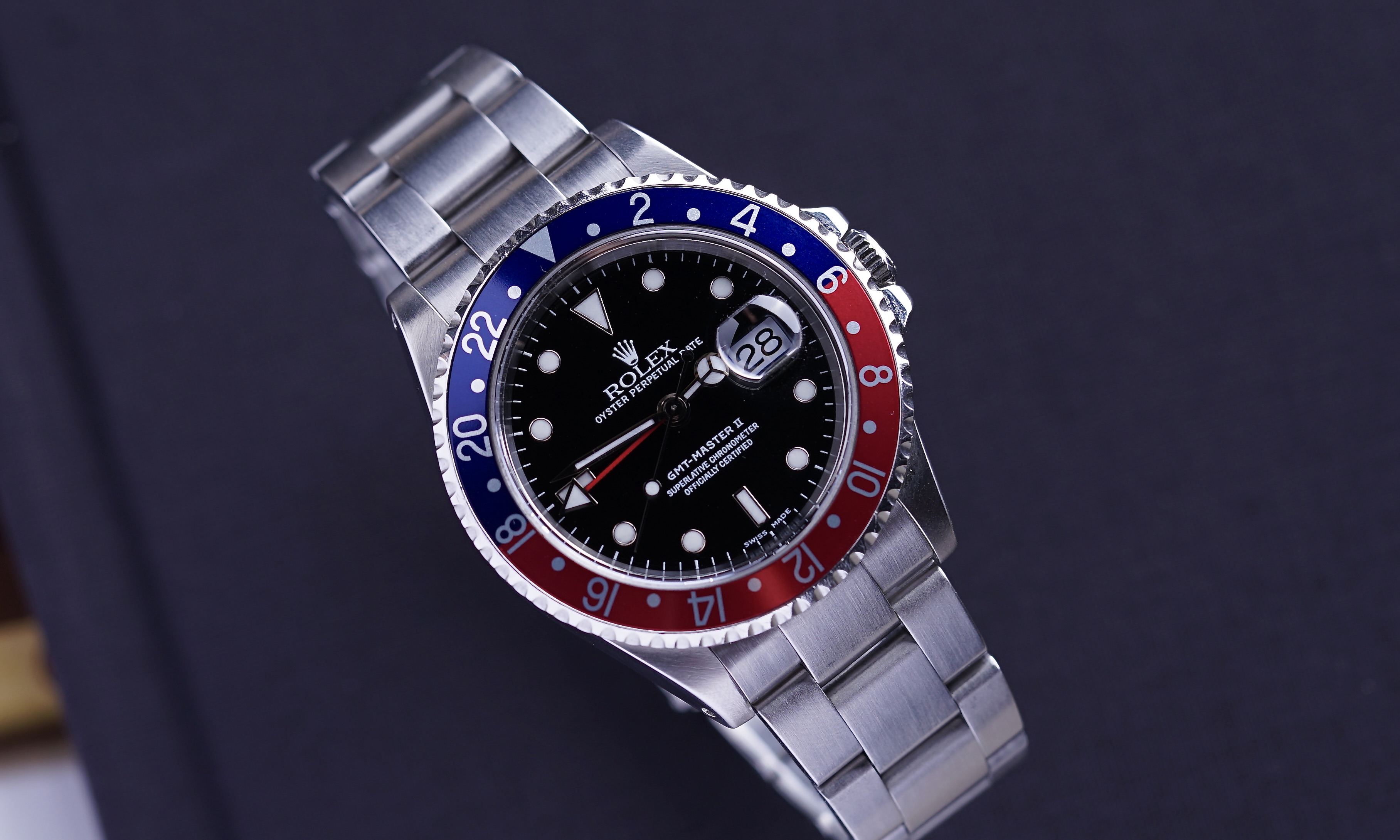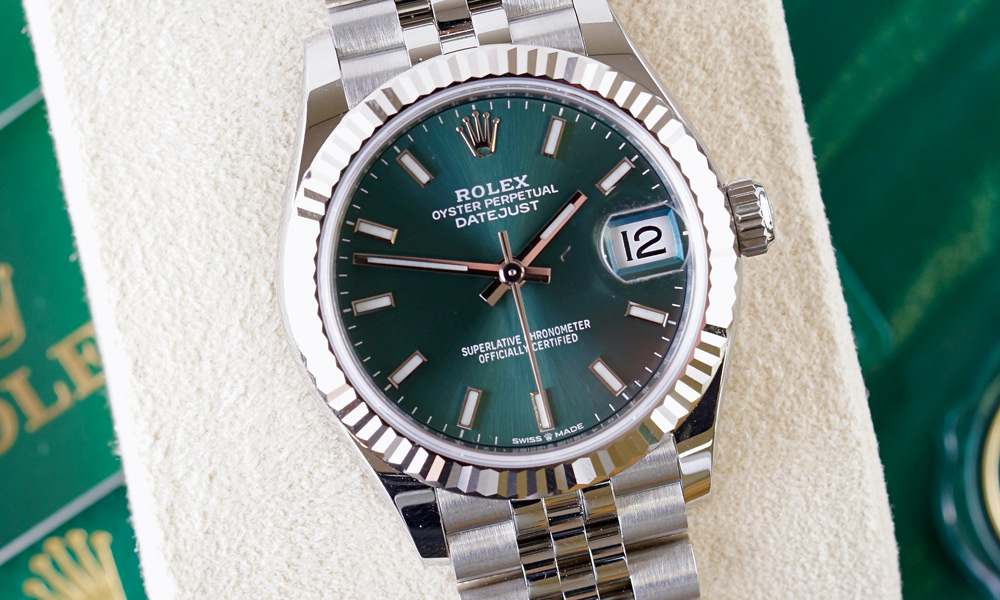The Historical Context

Technical Differences: The Movements
GMT-Master 16700: Caliber 3175
- The local time is indicated by the standard hour hand
- The 24-hour hand (usually with a triangular tip) works in conjunction with the rotating bezel to display a second time zone
GMT-Master II 16710: Caliber 3185/318
- Local time is indicated by the standard hour hand, which can be adjusted in one-hour increments without affecting the minute and second hands (perfect for travelers crossing time zones)
- The 24-hour hand can be set independently to indicate a second time zone
- By using the rotating bezel, a third time zone can be tracked
External Characteristics and Differences
Bezel options
- Mainly available with the classic red and blue “Pepsi” bezel.
- Some later models were also released with a completely black bezel.
- The 16700 never officially had a “Coke” (red and black) bezel option.
- Offered more bezel options: the “Pepsi” (red-blue), “Coke” (red-black), and all black
- During the production period, all three options were available, although availability varied by region and period

Dial and Case
- The text marking on the dial (“GMT-Master” vs. “GMT-Master II”)
- Some later 16710 models have slightly more modern dials with improved Luminova instead of Tritium
- Earlier 16710 models have dials marked “Swiss Made” (Tritium), while later models show ‘Swiss’ (Luminova) or “Swiss Made” (Super-Luminova)
Bracelets
- Oyster bracelet (reference 78360 with 501B end links)
- Jubilee bracelet (reference 62510 with 503B end links)
- Some later-produced 16710 models have improved clasps and bracelets.
Production period and evolution
GMT-Master 16700 (1988-1999)
- Early models (until around 1989) still had glossy dials.
- Around 1989, Rolex switched to matte dials.
- Early models used Tritium for luminescent hands and hour markers.
- Later models (around 1998) switched to Luminova.
GMT-Master II 16710 (1989-2007)
- Early models with glossy dials and Tritium lume
- Transition to Luminova around 1998
- Transition to Super-Luminova around 2000
- Later models (after around 2003) have engraved rehaut (inner ring of the dial) with “ROLEX” repeated as an anti-counterfeiting measure
- The very last models were given SEL (Solid End Links) instead of the earlier hollow end links
Why the 16700 is considered the last “true” GMT-Master
- Faithful to the original concept: The 16700 retains the original operating principle of the GMT function as conceived in 1955, with the linked 24-hour hand used in conjunction with the rotating bezel.
- Historical continuity: It represents the end point of an unbroken line of evolution dating back to the very first GMT-Master model (ref. 6542).
- Purity of function: Some enthusiasts appreciate the simplicity of the original GMT concept, without the added complexity of the independent 24-hour hand.
- Collectible value: As the last model in the original GMT-Master line, the 16700 holds a special place in Rolex history, making it an attractive item for collectors.
Why the 16710 is loved by travelers and collectors
- Superior functionality: The ability to adjust the hour hand independently in one-hour increments makes it more practical for frequent travelers. You can adjust the local time without disturbing the minute and second hands.
- Three time zones: The ability to track three time zones simultaneously is a significant functional improvement.
- Last of its kind: The 16710 represents the end of an era as the last GMT-Master II model with an aluminum bezel insert (later models have ceramic bezels).
- Bezel options: The availability of three different bezel colors (Pepsi, Coke, and black) gives collectors more variety.
- Modern reliability with vintage charm: It offers the reliability of a more modern movement while retaining the classic aesthetic that appeals to many collectors.

Investment potential: 16700 vs. 16710
- Rarer than the 16710 due to its shorter production period
- Increasingly valued among collectors as the “last true GMT-Master”
- Generally priced slightly lower than the 16710
- Particularly rare in certain configurations (such as late models with black bezels)
- Wider availability due to longer production period
- More highly valued by users due to increased functionality
- Highly sought after in the “Coke” bezel variation that was not available for the 16700
- Late models with engraved rehaut often command a premium
Slot overview: Which model suits you best?
- You are a watch collector with an appreciation for historical models.
- You are looking for the latest model in the original GMT-Master line.
- You appreciate the simplicity of the original GMT concept.
- You are looking for a model that may develop more collector’s value in the long term.
Choose the GMT-Master II 16710 if:
- You travel regularly and appreciate the functionality of three time zones
- You find the independent setting of the hour hand useful
- You prefer the “Coke” bezel variation
- You are looking for a slightly more modern watch with a similar vintage look.
Here are five Q&A pairs tailored for the blog “Rolex GMT-Master 16700 vs. GMT-Master II 16710: A Detailed Comparison”:
____________________________________________________________________________________________________
Q1: What is the main difference between the Rolex GMT-Master 16700 and the GMT-Master II 16710?
The biggest distinction lies in functionality. The 16700 features a fixed hour hand, requiring the bezel to track a second time zone, while the 16710 allows the hour hand to be independently set, making it more versatile for travelers who need to track multiple time zones.
Q2: When were the Rolex GMT-Master 16700 and GMT-Master II 16710 produced?
The GMT-Master 16700 was produced from 1988 until 1999 as the final reference of the original GMT-Master line. The GMT-Master II 16710 was introduced in 1989 and remained in production until 2007, replacing the 16700 entirely.
Q3: How do the movements differ between the two models?
The Rolex 16700 is powered by the Caliber 3175, which does not allow an independently adjustable hour hand. The 16710, on the other hand, houses the Caliber 3185 (later updated to 3186), offering the independent hour-hand feature that became a hallmark of the GMT-Master II.
Q4: Are there differences in bezel and dial options between the 16700 and 16710?
Yes. The 16700 was only available with the Pepsi (red and blue) bezel insert, while the 16710 came in Pepsi, Coke (red and black), and all-black variants, giving buyers more customization choices. Both models had black dials, but the 16710 offered slightly more variety over its longer production run.
Q5: Which model is more collectible today, the 16700 or 16710?
Both are highly desirable, but the 16700 is rarer since it was produced for a shorter period and represents the last true GMT-Master. The 16710, with its longer production run and bezel variations, is often favored by enthusiasts for its versatility. Collectors typically prize well-preserved examples of either model, especially with original box and papers.












